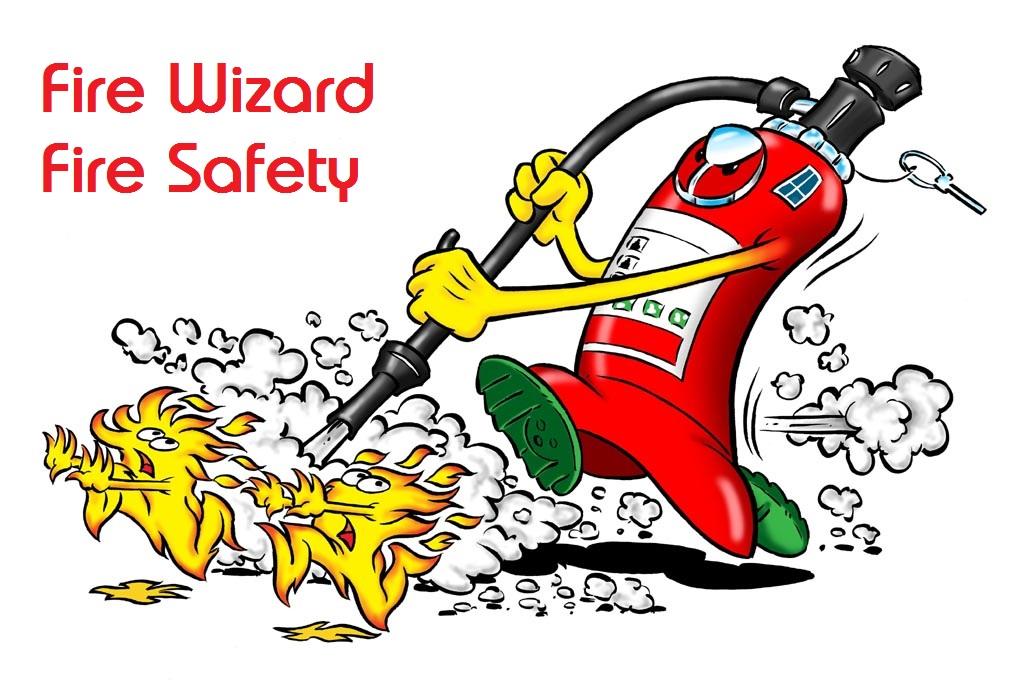-
Posts
2,564 -
Joined
-
Last visited
Everything posted by AnthonyB
-

A provider of Type 2 intrusive fire risk assessment required
AnthonyB replied to AdrianO's topic in Fire Risk Assessments
Sometimes you need to use two parties - one to do the intrusive work and make good (often a passive fire protection company) and then a risk assessor to take their findings into the FRA and determine what remedials, if any, are required. Tenos can do both aspects in house. -
I think, that based on layout, all this may be unnecessary, however without seeing the premises (or accurate plans) I can't be sure. The date of build makes me think it's going to be fine as it is, builds of this era do not usually have non compliant layouts, just service penetration fire stopping/door issues. Due to the age there should be a design fire strategy that formed part of the mandatory building information that should have been handed down on completion to whoever is responsible for the common parts, it's worth getting hold of. Sadly there are a lot of FRA assessors that don't understand the differences between commercial & residential.
-
Is this in Manchester?
-
It might not be used bu anyone else, but it is not your stair to use, it belongs to the freeholder or TMC so they are in their right to ask you to remove it even if there were no H&S reasons. As per my previous answer the management have clearly adopted the zero tolerance approach so unless a case can be made for managed use and more importantly the agent be persuaded to adopt it then you are stuck. Also even if they do not obstruct they will burn and the principle of communal circulation areas in flats is that they do not contain anything that can burn.
-
If built as stay put to Building Regulations you wouldn't expect any call points (or alarm sounders) - whilst you might have seen them in other purpose built modern blocks they aren't actually required.
-
If your premises were built for stay put you would not expect to see call points or even alarm sounders. However the configuration of your system sounds like one designed for a premises where a full evacuation is required and as such call points would normally be required - this is also the case in sheltered housing (more commonly called over 55 or retirement villages as it sounds better) where it is stay out other than for the common areas or flat of fire origin.
-
It's not normal to do this, usually lift doors are only FD30 - lifts usually open into lobbies with FD30S doors to provide the smoke protection or a self closing fire door used to be put across the lift opening in the past under old legislation as a lot of older buildings couldn't lobby the lifts and/or had lift doors that were not fire resisting or even open in nature.
-
The shared areas of Houses in Multiple Occupation are also subject to the Fire Safety Order as well as the Housing Act so you could contact the Fire Service. Also under the new HMO legislation that came in in October 2018 these premises are now subject for Mandatory Licensing.
-
Sounds like there should be a mixed system, but there is only the common provision. Usually the Grade A common system has heats in the bedsit to prevent building wide false alarms (but alerting still if there is a fire when that occupier is out) and each bedsit has local Grade D smoke alarms to protect the life safety of the occupier (but being local only cooking and other false alarms only disrupt that occupier) https://www.rla.org.uk/docs/LACORSFSguideApril62009.PDF
-
That's because a compliant risk assessment requires a lot of information - a relatively short example is in here https://assets.publishing.service.gov.uk/government/uploads/system/uploads/attachment_data/file/422175/9449_Offices_and_Shops_v2.pdf
-
I'd agree, if it's the original hard wired kitchen device it will be a heat alarm, not a smoke alarm - look here for the differences in appearance https://www.safelincs.co.uk/smoke-alarms/
-
Your tenant is wrong - the Grade A communal system need only provide a heat detector and sounder in the hallway of each flat to support the full evacuation strategy required as a pre 1990's flat conversion. The self contained Grade D system already in the flats is there for the individual flat occupiers protection from a fire in their demise and if installed previously is likely to have been to the minimum standard of the time, LD3, which would only require a smoke alarm in the hall. New installations in flats would usually be LD2, as would upgrades for existing and this is when you would get a heat alarm in the kitchen linked to the hall smoke alarm (not the common system) Both Grade A & Grade D systems are common as wireless linked systems which might be an option.
-
Did the person telling you that you would be shut down work for a furniture or fire treatment company? You wouldn't get a Prohibition Notice for that and it's not even checked during routine audits. Some guidance is here https://www.fira.co.uk/images/FIRA-Contract-Flammability-Guide-2011.pdf
-

External lights as part of the 3hrs annual emergency light test
AnthonyB replied to a topic in Emergency Lighting
Yes, external emergency lighting has been required for decades and has always been subject to the same testing regime as other emergency lights as set down in BS5266. Either your previous company wasn't doing a proper job (quite possible, sadly) or they were fine before. -
I'm used to houses of more than one storey and flats in blocks, the latter using the protected hall approach and requiring the requisite doors as per Table C. At the end of the day it's a Building Control matter and LABC or your AI will decide how to interpret the guidance. Mostly the internal doors are FD20 doors, which is usually an FD30 blank without the intumescent strips. Every new build flat I've been to has this set up.
-
Yes, it refers to a fire being sensed by a human (sight/smell/heard/felt) with them subsequently raising the alarm in a manual manner, which in a very small single storey premises may be a shout or a whistle/horn/gong and in larger buildings activation of a manual call point in an electrical fire alarm system.
-

Does my front door need a lock without key?
AnthonyB replied to a topic in Fire Doors and Accessories
It's perfectly legal and if you are in flats the door should already be like this anyway. https://www.ironmongerydirect.co.uk/search?query=mortice thumbturn https://www.ironmongerydirect.co.uk/browse/locks-latches-and-security/filter/%24s%3Deuro cylinder thumbturns?fi=c -
You will find your answers here: https://assets.publishing.service.gov.uk/government/uploads/system/uploads/attachment_data/file/832631/Approved_Document_B__fire_safety__volume_1_-_2019_edition.pdf In the old days often only kitchen and living room doors were fire doors, now they all have to be other than the bathroom. They don't, however, need self closers or intumescent strips.
-
It's purely a convenience factor - for use in high traffic areas where the doors being closed would hinder circulation leading to the doors being wedged or damaged (the later particularly where trolleys of goods are pushed through). The hold opens will ensure the doors can always shut when they need to be.
-
Your agent is applying the 'zero tolerance' approach detailed in Government fire safety guidance as it is the easiest to implement and leaves no ambiguity as to what can be placed in the common areas. However the guidance does offer an alternative which is ‘managed use’. This approach allows strictly defined use of common parts and limits the items allowed, to control fire load and ease of ignition. It includes strict conditions on where such items can be kept. For example, a ‘managed use’ policy might permit residents to: • place pot plants and door mats outside their front doors • have framed pictures and notice boards on walls • store bicycles, prams and mobility scooters in places that are out of the way and not likely to cause obstruction. It's not popular with agents as it requires a lot more hands on management and a bigger liability risk, but I have assessed premises where it has been effective due to the residents being proactive in monitoring compliance themselves.
-
They are not there to aid in escape, and as they are fire extinguishers their very purpose is to fight a fire! The clue is in the name.... From the Government Guidance: It is not normally considered necessary to provide fire extinguishers or hose reels in the common parts of blocks of flats. Such equipment should only be used by those trained in its use. It is not considered appropriate or practicable for residents in a block of flats to receive such training. In addition, if a fire occurs in a flat, the provision of fire extinguishing appliances in the common parts might encourage the occupants of the flat to enter the common parts to obtain an appliance and return to their flat to fight the fire. Such a procedure is inappropriate The common parts are your escape route and as such are constructed such that they will be safe from fire for considerable time and should not have a fire starting in them (unless someone has broken the law and introduced fire risks into this area). A typical water or foam extinguisher is unsuitable for most fire risks in flats, which are usually of cooking or electrical nature. Communal circulation areas are (or should be) fire sterile forming part of the protected escape route for the building and should only include basic carpeting and wall coverings that would not be involved in a fire, if at all, until well after conditions in the area would be fatal to human life. You would be best placed in removing them and making a saving in the residents service charge budget that can be better spent on other things.
-
As it's a private dwelling the internal door requirements are not retrospective, fire safety legislation does not cover these areas. (If used as a HMO or similar this would be different)
-
Fixed ladders are not normally accepted as means of escape under regulations and guidance, however an exception is made for areas that are infrequently used or only resorted to by small numbers, usually under 5, and only staff no public. So it's not out of the question - bear in mind this assumes all users are fit and able bodied.
-

Number of fire exits required - single stair office block
AnthonyB replied to Meady's topic in Fire Exits
If it's new build the designers may have used BS9999 instead of ADB as it can reduce the number of exits and stairs needed - it may also be fire engineered. The design fire strategy will give you the answers you seek.

